Are you new to the world of tattooing and interested in learning how to tattoo color? If so, you’ve come to the right place! This easy guide will teach you the basics of how to tattoo color and provide you with the knowledge you need to create beautiful and unique tattoos. With some practice and patience, you’ll be able to confidently tattoo in color and create amazing designs that you can be proud of. So, let’s get started!
Contents
Types Of Tattoo Colors
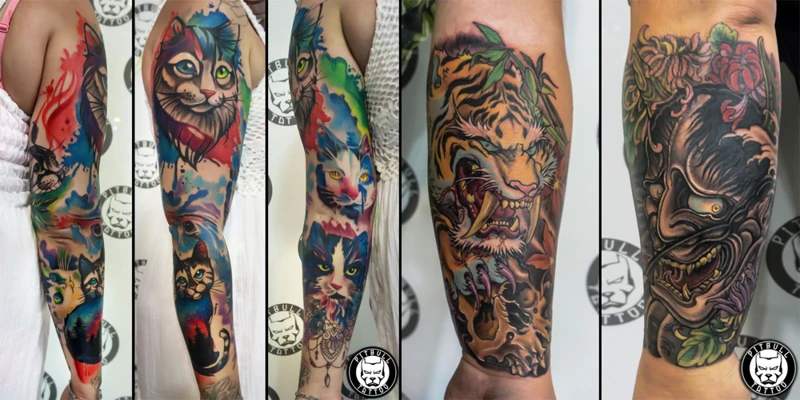
Tattooing is an art form that has been practiced for centuries and involves using various colors to create unique designs and effects. Knowing how to color in tattoos is an important part of any tattoo artist’s skill set. Here is an easy guide for beginners on the different types of tattoo colors available:
- Basic Colors – The most commonly used tattoo inks are the basic colors such as black, gray, or white. These colors are easy to work with and can be used to create bold outlines or delicate shading.
- Neon Colors – Neon colors are becoming increasingly popular in tattoos as they can provide a vibrant, eye-catching effect. Popular neon tattoo inks include pink, green, orange, and yellow.
- Metallic Colors – Metallic tattoo inks are perfect for creating subtle, shimmering effects. Popular metallic colors include bronze, silver, gold, and copper.
- Pearlescent Colors – Pearlescent tattoo inks provide a unique, iridescent effect that can be used to create dynamic designs. Popular pearlescent colors include lavender, pink, blue, and green.
- Glow-in-the-Dark Colors – Glow-in-the-dark tattoo inks are perfect for creating a unique, eye-catching effect. Popular glow-in-the-dark colors include green, purple, and blue.
By understanding the different types of tattoo colors available and how to color in tattoos, you can create truly unique and beautiful designs. Experimenting with different colors and effects can help you find the perfect design for your next tattoo.
Choosing The Right Tattoo Color
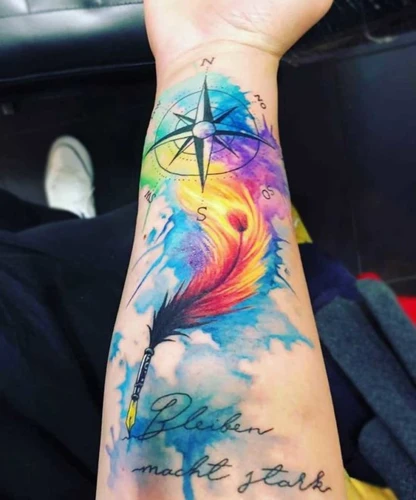
Choosing the right tattoo color can be tricky but with the right knowledge, you can get the perfect outcome. The best way to determine the right color for your tattoo is to understand the different color pigments and how they interact with each other.
Pigment Selection
Tattoo ink is composed of various pigments, which are the most important factor in determining the color of your tattoo. When choosing your ink, you must consider the color saturation, opacity and the ability of the pigment to hold its color over time. The most common pigments used in tattoos are black, yellow, red, blue, brown and green.
Color Mixing
If you’re looking for a unique color, you can mix and match pigments to create new shades. Different pigments can be combined to produce a wide range of vibrant and subtle colors. For example, a combination of yellow, red and blue will give you an orange hue, while adding a touch of black can create a more muted tone.
Tattoo Placement
The placement of your tattoo can also impact the color of your ink. Some areas of the body will require more ink to be visible, as the skin absorbs more color in certain areas. For example, tattoos on the wrist or ankle may appear lighter due to the thinner skin, while tattoos on the arms or chest may appear darker due to the thicker skin.
Skin Tone
The color of your skin can also affect the appearance of your tattoo, as lighter skin tones will appear brighter than darker skin tones. If you have a darker skin tone, you may need to use a deeper shade of ink to ensure your design is visible.
Aftercare
Finally, you need to take care of your tattoo to make sure its color lasts. This involves avoiding direct sunlight and protecting your skin with sunscreen. You should also follow the instructions of your artist to ensure your tattoo stays vibrant and doesn’t fade over time.
By following these tips, you can ensure that your tattoo looks great and lasts for years to come. With the right amount of knowledge and care, you can easily learn how to color a tattoo and create the perfect design.
Preparing The Skin For Coloring
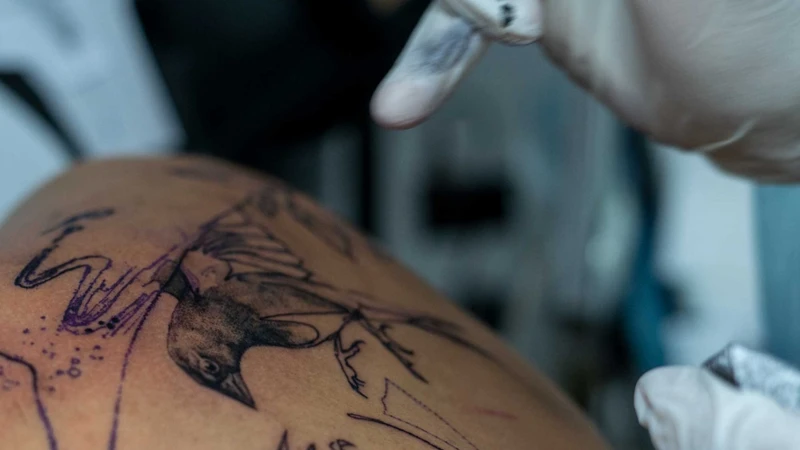
- Clean: Clean the area thoroughly with warm water and a mild soap.
- Dry: Make sure that the area is completely dry before applying color.
- Shave: Shave the area to be tattooed with a disposable razor.
- Disinfect: Disinfect the area with an antiseptic cleaner.
- Trim: Trim any existing hair in the area.
- Apply Ointment: Apply a thin layer of ointment to the area to keep it moist.
Applying The Color
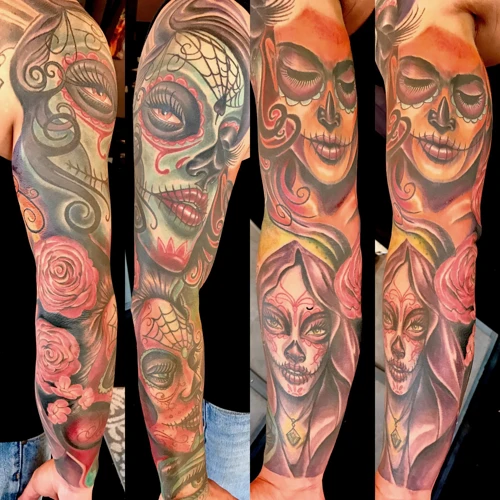
Once you have finished sketching out the design, you are ready to apply the color. To do this, you need to prepare the ink and your tattoo machine. Make sure the ink is mixed properly and that the machine is properly set up.
Choose the Right Needle
The needle you use is an important factor when it comes to applying the color. You want to choose a needle that is the right size for the area you are tattooing and that has the right shape. The needle should be sharp, but not too sharp, as this can cause skin damage.
Draw the Outline
Once you have chosen the right needle, you can begin to draw the outline of your design. Use the needle to slowly trace the outline of the design. As you draw, make sure to keep the needle moving and not to press too hard on the skin.
Fill in the Color
Once you have drawn the outline, you can begin to fill in the color. Start in the center of the design and work your way outward, slowly adding layers of color until you have reached the desired shade. Make sure to use even, consistent strokes to ensure an even color.
Finishing Touches
Once the color is applied, you can add any shading or highlights to the design. This will help give the tattoo a more finished look. When you are finished, you can apply a thin layer of petroleum jelly or tattoo balm to keep the skin moisturized and to help the color last longer.
Blending Colors

- Color Wheel Theory: Blending colors is an essential skill for any tattoo artist. It is based on the color wheel theory which states that the three primary colors (red, blue, and yellow) can be mixed together to create other colors.
- Blending Techniques: There are a variety of blending techniques available to tattoo artists such as feathering, shading, and stippling. Each technique can create a unique look and feel.
- Creating Depth: Blending colors can also be used to create depth and contrast. This can be done by using darker colors to create shadows and highlights with lighter colors.
- Adding Dimension: By using a variety of colors and blending techniques, tattoo artists can create a tattoo that has a three-dimensional look.
- Mixing Inks: Tattoo inks come in a variety of colors and can also be mixed together to create new colors. This is an effective way to create unique designs.
Aftercare
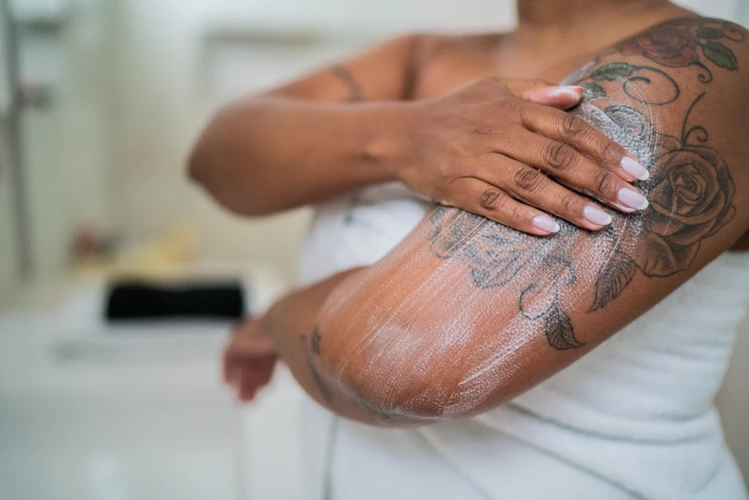
Cleanse: Wash your new tattoo gently with lukewarm water and a mild soap. Rinse thoroughly, and then pat dry with a clean towel. Don’t use a washcloth or anything abrasive.
Moisturize: After you cleanse, apply a thin layer of a fragrance-free, water-based moisturizer to your tattoo. Don’t use petroleum jelly, oils, or any other oily product.
Protect: Don’t let your new tattoo get wet in the shower. Instead, cover it with a waterproof bandage or wrap it in plastic wrap. Don’t use a bandage that’s too tight.
Heal: Your tattoo will take several weeks to fully heal. During this time, avoid soaking it in water, such as in the bathtub or swimming pool. Also, avoid strenuous activities that might irritate it.
Follow up: After your tattoo is healed, it’s important to keep it moisturized. Use a fragrance-free, water-based moisturizer to protect and preserve the ink.
What to Avoid
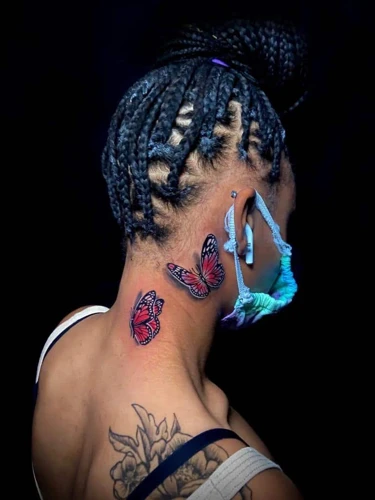
- Color blending – Color blending can be difficult for novice tattoo artists and should be avoided. This technique requires a great deal of skill and precision, and it’s best left to experienced tattoo artists.
- Mixing colors – Mixing colors can be tricky, and it’s best left to experienced professionals. If you’re just starting out, it’s best to stick with single color tattoos.
- Tattooing in an uncomfortable position – When tattooing, it’s important to be comfortable and in the best position possible. If you find yourself in an uncomfortable position, it can lead to mistakes, so be sure to adjust your position if necessary.
- Using wrong type of needle – Different types of needles are used for different types of tattoos, so it’s important to use the right type of needle for your tattoo. Using the wrong type of needle can result in poor tattoo results.
- Using low-quality ink – It’s important to use high-quality ink when tattooing. Using low-quality ink can produce an uneven color and can lead to fading and discoloration over time.
Troubleshooting
If you’re having trouble with how to color a tattoo, the following tips can help you out:
- Make sure your needle is properly lubricated to ensure accuracy and control.
- Get a steady hand to make sure your lines are precise and consistent.
- Ensure that the ink is mixed properly, as too much water or too little pigment can affect the outcome.
- Use a clean and sterile workspace to avoid infection.
- Make sure the stencil is properly placed to ensure accuracy.
If you’re still having trouble coloring in tattoos, consider the following:
- Practice on practice skin to get the hang of it.
- Take breaks so you don’t get too tired.
- Consider using a white basecoat to make the colors look brighter and more vibrant.
- Choose the right type of ink for the job, as some inks are better suited for certain looks.
In some cases, the best solution is to seek professional help. A professional tattoo artist will be able to help you with how to tattoo color and ensure that your tattoo looks its best.
Frequently Asked Questions
What type of equipment is needed for tattooing color?
Tattoo Gun: Every artist needs a reliable tattoo gun for injecting the ink into the skin. It should be of good quality to ensure smooth operation and avoid any unnecessary pain.
Tattoo Needles: Sterile needles are a must for proper color tattooing. They come in various sizes and shapes, and should be changed after each use.
Inks: Quality inks are essential for a good color tattoo. These come in various colors and shades, and should be stored properly to prevent contamination.
Tattoo Stencils: To ensure the correct shape and size of the tattoo, a stencil must be used. It should be of the same size as the tattoo and be applied prior to the process.
Disposable Gloves: To avoid any possible infection, disposable gloves must be used. They should be changed after each use and disposed properly.
Disposable Razors: Disposable razors should be used to shave the area where the tattoo will be placed. This helps to make a clean surface for the tattooing process.
Tattoo Aftercare Kits: Tattoo aftercare kits are essential for proper tattoo care. These kits typically contain antiseptic ointment, bandages, and other supplies to aid in the healing process.
What Type of Inks Should Be Used for Tattooing Color?
Tattoo inks come in a variety of colors, and it is important to use the right type of ink for the desired effect. Professional tattoo artists typically use professional-grade pigments, which are often made from organic materials and are safe for use on the skin. Some people opt for synthetic inks, which may be cheaper but can cause adverse reactions in some people. It is important to do research on the inks being used, as some inks may contain ingredients that can cause irritation or an allergic reaction. To ensure the best results, it is best to use professional-grade, organic inks for tattooing color.
Is it necessary to have a professional artist for tattooing color?
Yes. Professional artists are highly trained and experienced in the art of tattooing color. They have the knowledge and skill to create a beautiful tattoo that will last for many years. They also use the highest quality inks and needles to ensure that their tattoos look great and last longer.
- Professionals can create a design that will look great for years to come.
- They use the best inks, needles and equipment.
- They are knowledgeable about the healing processes associated with tattooing color.
- They have the experience to create a unique, custom design that will look great.
- They can provide advice on taking care of your new tattoo.
Tattooing color requires skill and knowledge. Professional artists have the experience and skill to create a beautiful and lasting tattoo that you can be proud of.
What type of design works best for tattooing color?
Geometric Shapes: Geometric shapes such as squares, circles, triangles, and hexagons are some of the best designs for color tattoos. These shapes can be combined in a variety of ways to create interesting and unique designs.
Abstract Art: Abstract art is a great choice for tattoos because it allows you to be creative and explore different colors and shapes. This style of tattooing can be used to create unique and eye-catching designs.
Nature-Inspired Designs: Nature-inspired designs such as flowers, trees, and animals are also great choices for color tattoos. These designs can be used to create beautiful and meaningful tattoos.
Symbols: Symbols such as hearts, stars, and arrows are also great for color tattoos. These symbols can be used to create meaningful and symbolic tattoos.
Lettering: Lettering is another great choice for color tattoos. This style of tattooing can be used to create beautiful script and lettering designs.
Are there any safety precautions to take when tattooing color?
Always wear protective gloves, glasses and a mask when tattooing color. This will help to protect you from any contact with the tattoo ink, which can be hazardous to your health. Additionally, it is important to make sure that all materials used for the tattooing process are clean and sterilized.
Avoid contact with eyes and mouth while tattooing color. The ink used in the tattooing process can be toxic, and any contact with the eyes or mouth can cause irritation or worse.
Do a patch test before the tattooing session. This is important to ensure that the person is not allergic to the ink or the pigment.
Do not share needles and other tattooing equipment with other people. This is to avoid the risk of cross-contamination and the spread of infectious diseases.
Wash your hands thoroughly before and after tattooing. This is to prevent the spread of bacteria and other germs.
Keep the area clean after the tattooing session. This is to avoid infection and the spread of germs.
Dispose of the used needles properly. This is very important to prevent accidental injury and the spread of infection.
Do not tattoo over existing tattoos without consulting a professional. This is to avoid skin damage and the spread of infection.
Conclusion
Tattooing color is a great way to add vibrancy and personality to your artwork. By following the tips outlined in this guide, you can confidently create beautiful and long-lasting color tattoos. With practice, you will become a master at tattooing with color and have the skills to create stunning works of art.
Simply wanna input on few general things, The website style and design is perfect, the articles is very excellent : D.